Capacity Development
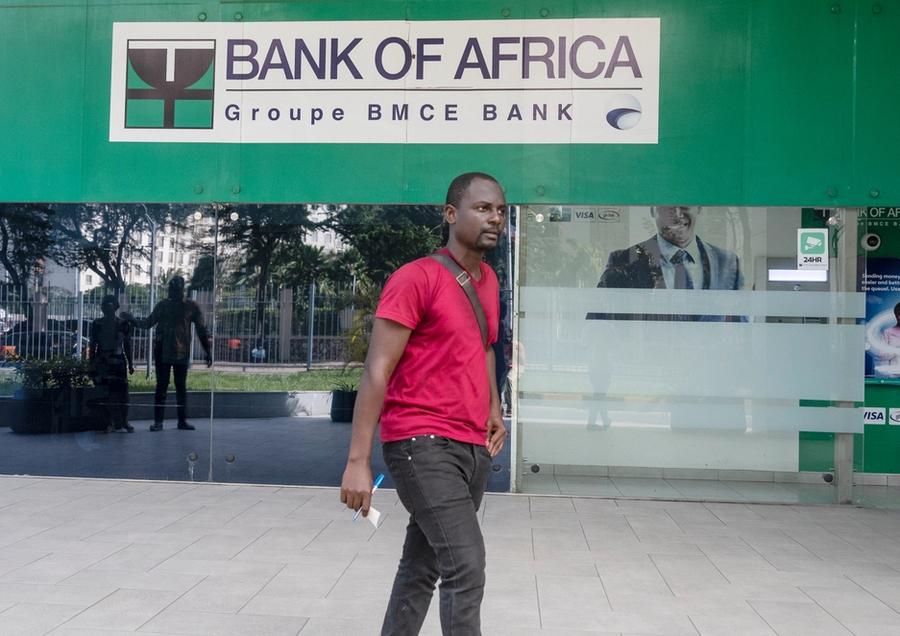
Strengthening the capacity of institutions—including central banks, finance ministries, revenue administrations, statistical agencies, and financial sector supervisory agencies—results in more effective policies and greater economic stability and inclusion. The IMF, along with its partners, works with member countries to modernize their economic policies and strengthen such institutions by providing demand-driven, tailored technical assistance and training focused on issues that are critical to economic stability and growth.
The IMF provides capacity development (CD)—which includes hands-on technical assistance and training, a suite of diagnostic tools and publications, and peer-learning opportunities—so that member countries can build sustainable and resilient institutions. These efforts are an important contribution to member countries’ progress toward the UN Sustainable Development Goals.
Figure 2.1
IMF Spending by Main Output
FY 2024

Source: IMF staff calculations.
Note: Excludes minor miscellaneous items and travel.
¹ Direct delivery only. Excludes capacity development activities related to policy, analytics, and other output areas.
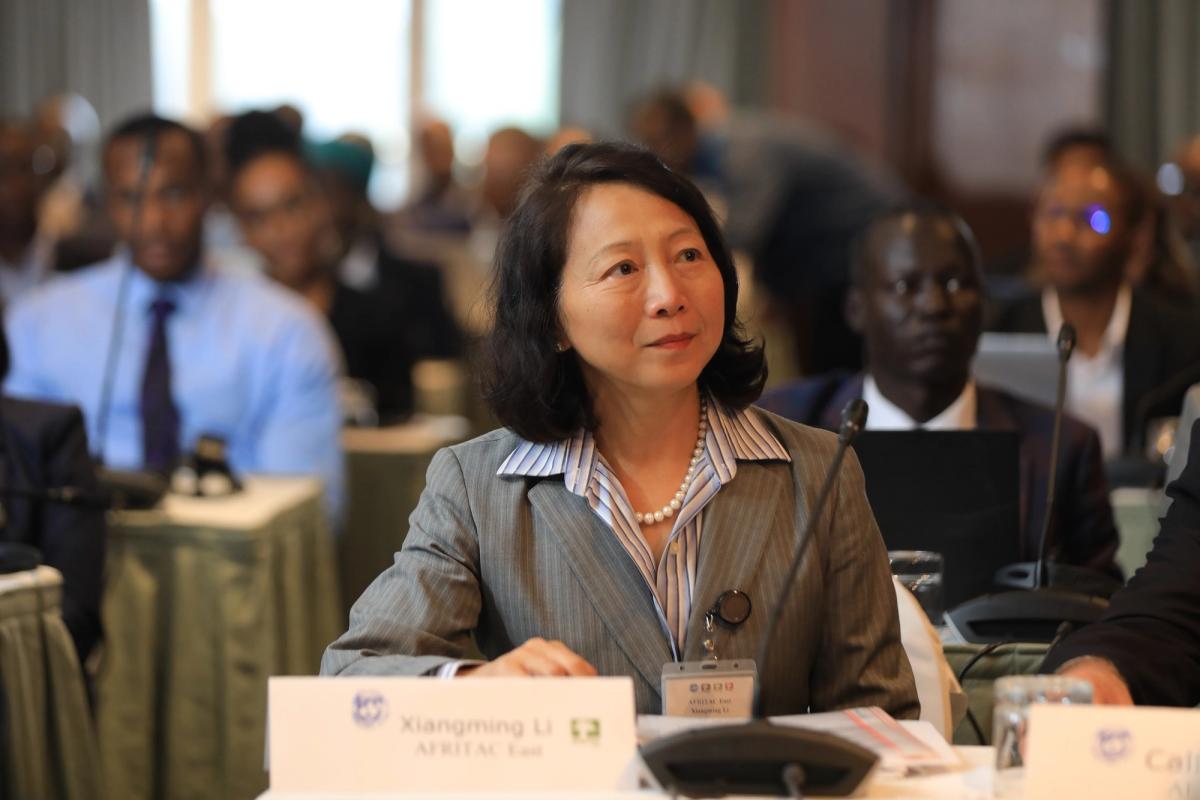
CD focuses on the IMF’s core areas of expertise, such as public finances, financial sector stability, central bank operations, macroeconomic frameworks, and economic statistics. It helps countries design better macroeconomic policies, mobilize revenue, spend better, access better data, and strengthen monetary and financial stability, as well as tackle cross-cutting issues, such as income and gender inequality, corruption, climate change, and digitalization. The IMF is uniquely positioned to support its membership in these areas, with its global reach, institutional experience¬, and world-class expertise. All IMF members benefit¬ from CD, but a priority is placed on support for low-income and fragile and conflict-affected countries (see Box 2.3).
Box 2.1

Review of the IMF’s Capacity Development Strategy
Towards a More Flexible, Integrated, and Tailored Model
Background. Every five years, the Executive Board of the IMF receives information on the evolution of and reforms related to IMF capacity development (CD), makes necessary policy decisions, and provides directions on goals for the next five-year period in the context of a formal CD strategy review (CDSR). The review completed in 2018.
The 2024 CDSR took place in a rapidly changing global landscape. Following the pandemic, member countries are facing a range of challenges. These include macro-financial uncertainties and debt vulnerabilities and are compounded by more frequent and intense climate-related shocks, higher food and energy insecurity, geopolitical tensions, and the digital revolution.
IMF priorities and working practices have also evolved. Addressing climate change, fragile and conflict-affected states, gender, and digital money are new institutional priorities, while surveillance aims to provide more tailored and targeted policy advice amid elevated member uncertainties, as highlighted in the 2021.
The challenging global economic environment calls for IMF CD that is even more flexible, integrated, and tailored. The Independent Evaluation Office of the IMF (IEO) review CD in 2022 affirmed that IMF CD is relevant, effective, and valued by members, and the IEO recommendations outlined a pathway for further enhancement of the impact of CD.
Key Conclusions of the 2024 CDSR
The current size of CD relative to the IMF’s other main activities is broadly appropriate, but more flexibility is needed. This flexibility could be in the overall size of CD spending in response to shocks or structural changes and in its composition by region and topic.
Integration with surveillance and lending is central to CD’s success. There has been substantial progress in internal processes and coverage of CD issues in Board documents and discussions. The review proposes new avenues for the Board to gain insight into prioritization, enhanced coverage of CD issues in staff reports, and better internal incentives for effective integration.
The review identifies options for enhancing the funding model and discusses ways to mitigate funding risks. Greater use of external financing has enabled the IMF to meet growing demand for CD in a flat real budget environment. However, the fundraising is tightening. The review identifies options and ways to reduce the cost of administering multiple funding sources and risks to support continuity of delivery and prioritization.
Enhanced monitoring and evaluation and modernization of delivery could further boost the impact of CD. The review reaffirms that IMF CD has been broadly effective and impactful. It proposes closer involvement of country authorities in the results management framework, more frequent evaluation, and better incorporation of monitoring and evaluation results in project and strategy development to enhance the impact of CD. The review also proposes modernizing delivery modalities, including through blended delivery that makes good use of technology.
Field presence, in particular regional capacity development centers, is fundamental to the IMF’s CD model, enabling more intensive and tailored CD. The review proposes actions to reflect this development through evolution of financing structures, governance, and relationship with headquarters activities. It also proposes continued increases in field presence, taking account of the evolution of all IMF operations and budgetary constraints.
The review proposes several measures to enhance the environment for IMF staff working in CD, accompanied by a strategic review of CD personnel structures. Growth in field presence has been accompanied by changes in the composition of CD staffing and issues in human resource models for CD employees. The focus is on selected short-term measures that can motivate CD staff. The proposed strategic review will be linked to other ongoing work, including work on field-based employment.
Reform proposals are interrelated and involve risks that need to be managed. The review assesses risks involved in implementing the new proposals and associated risk management strategies to inform the effective implementation of the CDSR proposals.
At the request of country authorities, IMF country teams and technical experts develop and implement an integrated work plan tailored to member countries’ needs and absorptive capacity. The IMF works with member countries through a global network of 17 regional capacity development centers (RCDCs), in-country placements of long-term resident advisors, and short-term visits by IMF staff members and experts (in person, remotely, or a combination of both—that is, through “hybrid” visits), classroom training, and free online courses. In addition, a variety of publications provide technical information and cross-country analysis useful to country authorities.
In the past decade, more than 200,000 cumulative active learners have taken at least one of the 90+ IMF free online courses. The online learning program also continued to expand its offerings in several languages other than English (Arabic, French, Portuguese, Russian, and Spanish).
Development partners of the IMF and RCDC member countries fund about two-thirds of direct spending on CD. Together, the IMF and its partners strive to help the membership build forward better and work toward a greener, smarter, and more equitable future.
To help maximize the impact of IMF CD on members’ ability to conduct effective macroeconomic management and boost their institutional resilience, the IMF regularly reviews its CD strategy. The latest review was concluded in April 2024 (see Box 2.1).
Box 2.2
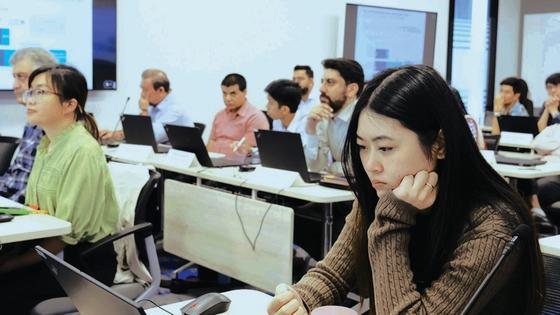
Ten Years of the IMF Online Learning Program
The IMF’s online learning program has become an increasingly important CD delivery modality, fueled by high demand from member countries and made possible thanks to the generous support of the Government of Japan. The program celebrated its first decade of operations during financial year 2024.
The program has expanded substantially over the past decade. Participation in online courses continues to grow, bringing the overall number of cumulative active global learners to more than 200,000 (see Box figure 2.1). The IMF Institute Learning Channel offers microlearning videos in various areas of IMF expertise and has reached 16,500-plus subscribers, and more than 1.23 million individual views.
The IMF's Online Learning Program, 2014 – 2024
Source: IMF, Institute for Capacity Development.
With close to 100 online courses available to government officials and the general public, the curriculum continues to be enriched in key areas of global interest. New modular courses have been added to the Virtual Training to Advance Revenue Administration (VITARA) series (Performance Management and Audit Program), and new courses on macroeconomic statistics (Financial Soundness Indicators, Producer Price Index) and debt management (Debt Management Debt Reporting and Investor Relations) are now available. Moreover, the program offers over 40 courses in languages other than English, so that IMF knowledge is now also available in Arabic, French, Portuguese, Russian, and Spanish.
The use of online learning in blended training and technical assistance, or in conjunction with surveillance, continues to enhance the impact of IMF CD by preparing authorities’ for virtual or face-to-face missions. One notable example of CD surveillance integration is the use of the online VAT Gap Estimation Model course ahead of a technical assistance mission in Honduras to estimate the value-added tax gap and identify preferential tax regimes and compliance gaps. These findings helped authorities draft a bill to streamline preferential tax regimes, aligned with long-standing recommendations from the IMF. Moreover, in FY 2024, 15 courses, designed specifically for blended CD delivery, covering various topics in macroeconomic analysis and statistics; and other training areas, were offered and received positive feedback from the IMF CD departments in terms of learning gains and participant satisfaction.
The use of online learning in blended training and technical assistance, or in conjunction with surveillance, continues to enhance the impact of IMF’s CD by preparing authorities’ for virtual or face-to-face missions.One notable example of CD-surveillance integration is the use of the online VAT Gap Estimation Model course ahead of a technical assistance mission in Honduras to estimate the value-added tax gap and identify preferential tax regimes and compliance gaps. These findings helped authorities draft a bill to streamline preferential tax regimes, aligned with long-standing recommendations from the IMF. Moreover, in FY 2024, 15 courses, designed specifically for blended CD delivery, covering various topics in macroeconomic analysis and statistics and other training areas, were offered and received positive feedback from the IMF CD departments in terms of learning gains and participant satisfaction.
All courses on the online platform are available anytime, anywhere, and at no cost, which makes the program a global public good, spearheading knowledge and skills for a more sustainable and inclusive global economy.
The review recommended that CD be more flexible, integrated, and tailored to better respond to member needs. The review benefited from the recent independent evaluation of IMF CD and a wide range of inputs, including internal and external consultations with CD stakeholders, surveys of CD recipients and development partners, background studies, and the recommendations of an external advisory group.
The strategic vision for IMF CD is informed by its comparative advantage and the IMF’s surveillance priorities amid a changing global CD landscape, characterized by elevated uncertainty from higher debt, geopolitical tensions, climate change, and digitalization. The proposals of this review center around six key areas—namely, CD prioritization and integration, funding models, monitoring and evaluation, delivery modalities, field presence, and human resources policies. Other important CD milestones in FY 2024 include the launch of the inaugural operations of the Global Public Finance Partnership (GPFP) and of the Ukraine Capacity Development Fund (UCDF). The GPFP will become the main vehicle for providing fiscal CD to emerging market and developing economies, with a principal focus on low-income countries and fragile and conflict-affected states. The GPFP will help member countries progress on their domestic resource mobilization agendas, by implementing good policies and strong management of domestic public revenues, which are key to supporting the G20 Domestic Resource Mobilization Initiative and countries’ development goals. The UCDF will provide substantial resources for the scaling up of technical assistance and training in support of the Ukrainian government’s ambitious economic reform agenda.
FY 2024 also marked the reopening of the office of the Middle East Regional Technical Assistance Center in Lebanon and several significant anniversaries: 30 years of the Pacific Financial Technical Assistance Center (Fiji); 25 years of the Singapore Regional Training Institute (Singapore); 20 years of the Regional Technical Assistance Center for francophone West Africa (Côte d'Ivoire); and 10 years of the Africa Training Institute (Mauritius), the Regional Technical Assistance Center for Anglophone and Lusophone West Africa (Ghana), and the IMF’s online learning program (see Box 2.2).
Box 2.3
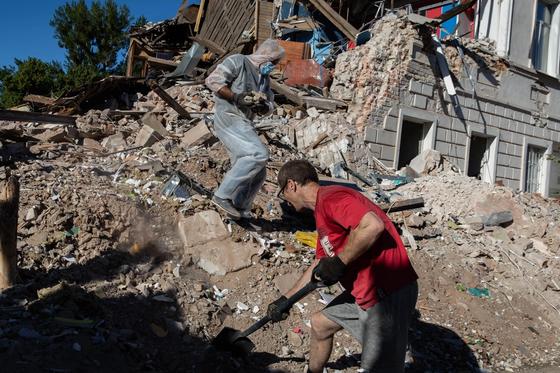
Scaling Up Capacity Development to Fragile and Conflict-Affected States
Fragile and conflict-affected states, a group of about 40 countries that are home to 1 billion people, are among the most vulnerable members of the international community. While each country is different, fragile states typically suffer from a mix of low state capacity and limited public service delivery, higher concentrations of extreme poverty, governance challenges, gender disparities, and in some cases, armed conflict. As a result, fragile states are more exposed to external shocks—such as pandemics, climate-related risks, and economic crises—but can also be active sources of regional instability through spillovers such as cross-border insecurity and forced displacement.
The IMF has stepped up its engagement with fragile and conflict-affected states, including through the implementation of a comprehensive strategy approved in 2022. The strategy provides an operating framework and a set of priority actions that enable the IMF to better support these countries to achieve macroeconomic stability, strengthen resilience, and promote inclusive growth to exit fragility. Recognizing that the path from fragility to stability can take decades, scaled-up capacity development to strengthen economic institutions is a core pillar of the fragile and conflict-affected states strategy. During FY 2024, 17 additional long-term experts were placed in countries and in regional capacity development centers to build authorities’ capacity to boost tax revenues, control and prioritize government spending, manage public debt, develop well-functioning central banks, step up financial regulation and supervision, strengthen governance, publish timely and accurate economic statistics, and build macroeconomic frameworks and basic tools to inform policy decisions. These are some country examples:
- Supporting authorities to design and implement a public financial management strategy in Chad, strengthening tax forecasting capacity in Mali, and applying blockchain technology to strengthen wage bill control in Guinea-Bissau.
- Modernizing central bank operations and financial sector supervision in Mozambique and Somalia, as well as technical assistance on the consumer price index compilation system in Iraq and supporting the central bank of Haiti on quarterly estimates of GDP.
- Technical assistance to develop macroeconomic frameworks and improve forecasting capacity in Papua New Guinea and Timor-Leste.
- Assistance to Chad on updating statistics for national accounts and to Yemen on public sector debt and government finance statistics.
Together with the 12 long-term experts already deployed in FY 2023, the IMF has added 27 new resident advisors in regional capacity development centers and in-country postings since the approval of the fragile and conflict-affected states strategy in March 2022 thanks to the generous support of development partners. As a result, the IMF’s capacity to deliver CD to these countries with field-based long-term experts working closely with authorities has increased significantly, in line with the strategy. This is especially critical for conflict-affected countries, where remaining engaged through CD is critical to prevent the collapse of institutions responsible for economic policymaking in highly constrained environments.
Capacity Development in Numbers
As of May 15, 2024

for hands-on technical advice, policy-oriented training, and peer learning

CD visits, involving 1,716 experts

courses delivered
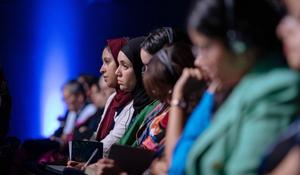
training languages offered
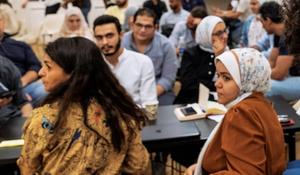
officials trained
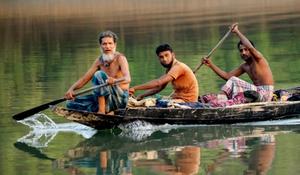
fragile and conflict-affected states among the top 10 recipients of CD
Direct Capacity Development Delivery
Figure 2.2
Capacity Development Delivery by Region
FY 2024 (percent of total)
Sources: IMF, Capacity Development Management and Administration Program; and IMF staff calculations.
Training Participation
Figure 2.5
Training Participation by Participant Region of Origin
FY 2024 (number of participants)
Sources: IMF, Participant and Applicant Tracking System; and IMF staff calculations.
Note: Most of the IMF’s training falls under the Institute for Capacity Development (ICD) Training program, which includes training coordinated by ICD and delivered by ICD and other departments at IMF headquarters and globally at the IMF’s regional capacity development centers and in programs for country officials. Training also includes IMF online courses successfully completed by country officials. In addition, training is provided by functional departments outside the ICD training program.
Top 10 Partners for IMF Capacity Development
(Contributions in US dollars over the past three years, FYs 2022–24)
- Japan
- European Union
- China
- Switzerland
- India
- France
- Kuwait
- Germany
- The Netherlands
- Korea
Note: Includes support for regional capacity development centers provided directly by host countries.
Top 10 Recipients of IMF Capacity Development
(FY 2024, US dollar spending)
- Cambodia
- Sri Lanka
- Uzbekistan
- Democratic Republic of the Congo
- Ghana
- Mozambique
- Malawi
- The Gambia
- Sierra Leone
- Bangladesh
Sources: IMF, Capacity Development Management and Administration Program; and IMF staff calculations.
Top 10 Recipients by Training Participation
(FY 2024, participant weeks)
- India
- China
- Bangladesh
- Cambodia
- Nigeria
- Kenya
- Cameroon
- Sri Lanka
- Uzbekistan
- Nepal
Sources: IMF, Participant and Applicant Tracking System; and IMF staff calculations.
Table 2.4
Thematic and Country Funds for IMF Capacity Development
Table 2.5
IMF Regional Capacity Development Centers
Continue Reading

Economic Surveillance
The IMF conducts surveillance to monitor the global economy and evaluates the economic and financial policies of its 191 member countries.
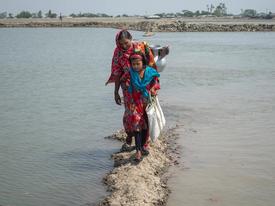
Lending
Provide financial assistance to member countries to address balance of payments issues, including foreign exchange shortages.
